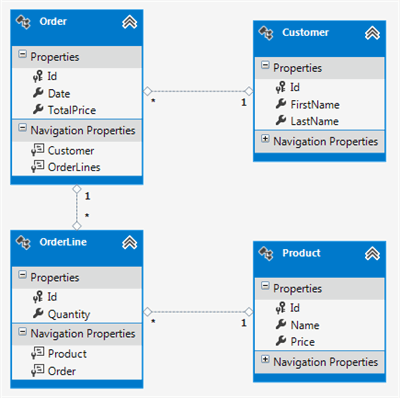

Otherwise the migration wouldn’t know another operation should be executed.
#Dbcontext generator data annotations code
The implementation still requires the developer to add custom code after performing the first part of the migration. Var operation = new CreateMergeOperation(tableName, columns) Public static OperationBuilder CreateMerge( Public CustomMigrationSqlGenerator(MigrationsSqlGeneratorDependencies dependencies, ICommandBatchPreparer commandBatchPreparer) : base(dependencies, commandBatchPreparer) ) public class CustomMigrationSqlGenerator : SqlServerMigrationsSqlGenerator Another possibility is writing your own custom migration operations to extend the migrations.
#Dbcontext generator data annotations update
The sql()method can be useful if a developer wants to update some records before or after a migration is performed.

To accommodate the option of creating your own operations, the MigrationBuilder can be extended! You can use the sql() method to write your own little piece of code into a migration. But it cannot contain everything a developer might want to do. The MigrationBuilder builds the migration and contains many different operations. We will first discuss how we can extend the SQL script generation of EF core. Updating the database is often performed during startup of your application. The changes will be persisted in a migration.cs file in which you can add extra operations or extra custom SQL. The CSharpMigrationGenerator will generate migration operations based on the changes that have been made. We will discuss CSharpMigrationGenerator later in the article. This will result in calling the CSharp part of the migration, the CSharpMigrationGenerator. To create a migration file you can use the. The migration takes place in two steps: the creation of a migration file based on your changes and updating your database schema. This way EF core can track which migrations have been applied and which have not, which is important if you want to update your database and have multiple migrations to apply. The individual migration files are saved to a history table in the database. Based on the snapshot ,a migration file is generated to describe the operations which are needed to move from the old model towards the new model. EF core compares the data model changes that the developer made with a snapshot of the old model that is known to EF core. MigrationsĮF core uses migrations to update the database Schema based on the data model changes that the developer made. To do this you’ll first need to know how a migration in EF core works. In the next article we will dive deeper into using merge statements. This article will dive deeper into how you can extend EF core. This way you would only need to write the code once and afterwards you’ll let EF core do the heavy lifting. To avoid going back to writing the code yourself for every object, you can write an extension on EF core. A merge statemant would create a single round-trip to the database for every type of object which needs to be inserted, updated or deleted regardless of the amount of records. To avoid the performance degration a merge statement could be used. When the amount of records increases the numerous round-trips will slow down the application. With a few records this won’t impose any issue. For example, on every insert, update or delete statement a round-trip to the database is performed. Often this is a “good enough” approach, but in some situations you might want to use a merge statement instead. When you decide to save data to your database, EF core will do this by using an insert, update or delete SQL statement. We will now focus on the persistence of data in your database, particularly a SQL database. In summary, it eliminates most of the data-access and data-persisting code and frees up the developer’s time to focus on more important areas of the code. NET objects based on your database schema. NET objects, or the other way around, creating. Additionally, it also helps with creating a database schema based on the. As the name implies it helps developers with persisting and accessing data which resides in a database without being encumbered with converting it from the database DataSet`s to.

What is Entity Framework Core?Įntity Framework Core (EF core) is a Microsoft supported open-source object-relational mapping (ORM) framework. But what if you want to do more than what Entity Framework Core offers out of the box? What if you have an edge case that needs support? Extending Entity Framework Core might be a solution. Entity Framework Core offers a broad framework to help create your database schema, and then store and access your data in said database.


 0 kommentar(er)
0 kommentar(er)
